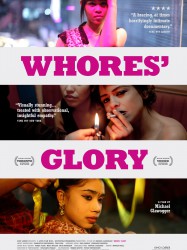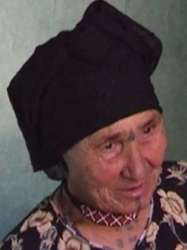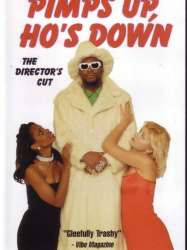Films with theme "Documentary films about prostitution", sorted by revenue
 , 1h25
, 1h25Directed by Zana Briski
Genres Documentary
Themes Films about children, Films about sexuality, Erotic films, Films about prostitution, Documentaire sur une personnalité, Documentary films about prostitution, Erotic thriller films
Actors Zana Briski
Briski, a documentary photographer, went to Kolkata to photograph prostitutes. While there, she befriended their children and offered to teach the children photography to reciprocate being allowed to photograph their mothers. The children were given cameras so they could learn photography and possibly improve their lives. Their photographs depicted a life in the red light district through the eyes of children typically overlooked and sworn off to do chores around the house until they were able to contribute more substantially to the family welfare. Much of their work was used in the film, and the filmmakers recorded the classes as well as daily life in the red light district. The children's work was exhibited, and one boy was even sent to a photography conference in Amsterdam. Briski also recorded her efforts to place the children in boarding schools although many of the children did not end up staying very long in the schools they were placed in. Others, such as Avijit and Kochi not only went on to continue their education, but were graded well.

Whores' Glory (2011)
, 1h59Directed by Michael Glawogger
Genres Documentary
Themes Films about sexuality, Erotic films, Films about prostitution, Documentary films about prostitution
The film is divided into three locally defined episodes: Bangkok (Thailand), Faridpur (Bangladesh) and Reynosa (Mexico).

Whore 2 (1994)
, 1h25Directed by Amos Kollek
Origin USA
Genres Drama, Documentary
Themes Films about sexuality, Erotic films, Films about prostitution, Documentary films about prostitution
Actors Amos Kollek

I Loved So Much... (2008)
, 50minutesDirected by Dalila Ennadre
Origin France
Genres Documentary
Themes French war films, La colonisation française, Politique, Films about sexuality, Erotic films, Films about prostitution, Documentary films about war, Documentary films about historical events, Documentary films about prostitution, La guerre d'Indochine, Political films, Erotic thriller films, Histoire de France
The documentary describes the life of a Moroccan woman employed as a prostitute in a military brothel by the French Colonial Army who took part in the Indochina War. Past 70, Fadma says she agreed to do the documentary so that France would recognize her as they do their veterans: "I too took part in the war".
 , 1h48
, 1h48Origin Bresil
Genres Documentary
Themes Films about sexuality, Erotic films, Films about prostitution, Documentary films about prostitution
900.000 people are trafficked through international borders every year with a single purpose: sexual exploitation. However, even with all the struggles and dangers, young Brazilian women still believe in the possibility of changing their lives and finding their enchanted prince as they are submerged into the work of sexual tourism. Only a tiny minority ever manages to find a soul mate and get married. The film journeys from the northeast of Brazil to Berlin seeking to understand the sexual, racial, and power imaginary of the young Cinderellas from the south and the wolves from the north.

Mutantes (2009)
, 1h30Directed by Virginie Despentes
Origin France
Genres Documentary
Themes Feminist films, Politique, Films about sexuality, Erotic films, LGBT-related films, Films about prostitution, Documentaire sur l'homosexualité, Documentary films about prostitution, Political films, Erotic thriller films, LGBT-related films, LGBT-related film
Actors Catherine Breillat, Annie Sprinkle
Une série d'entretiens internationaux (États-Unis, France, Espagne) avec des intellectuels, écrivains, théoriciens, militants queer sur le féminisme pro-sexe et la postpornographie. L'ensemble des propos est illustré par des images d'archives centrées sur l'action politique des travailleuses du sexe et par la captation de performances artistiques.
 , 1h10
, 1h10Directed by Shōhei Imamura
Genres Documentary
Themes Films about sexuality, Erotic films, Films about prostitution, Documentary films about war, Documentary films about historical events, Documentary films about prostitution, Political films, Documentary films about World War II
Actors Shōhei Imamura

Chicken Ranch (1983)
, 1h14Directed by Nick Broomfield
Genres Documentary
Themes Films about sexuality, Erotic films, Films about prostitution, Documentary films about prostitution
The documentary begins without narration as a plane lands down in the remote part of the desert where Chicken Ranch is situated while a number from the Broadway Musical based on the Texas situated Ranch is played. Before the documentary scenes begin, we are advised that the women working at Chicken Ranch only work for three weeks out of the month and that their earnings are split 50/50 with the owner (plus rent).

Streetwise (1984)
, 1h31Origin USA
Genres Documentary
Themes Films about children, Films about sexuality, Erotic films, Films about prostitution, Documentaire sur une personnalité, Documentary films about prostitution, Documentary films about cities
Actors Tom Waits
Streetwise portrays the lives of nine desperate teenagers. Thrown too young into a seedy, grown-up world, these runaways and castaways survive, but just barely. Rat, the dumpster diver; Tiny, the teenage prostitute; Shellie, the baby-faced one; and DeWayne, the hustler, are all old beyond their years. All are underage survivors fighting for life and love on the streets of downtown Seattle, Washington.

Not Angels But Angels (1994)
, 1h20Genres Documentary
Themes Films about sexuality, Erotic films, LGBT-related films, Films about prostitution, Documentaire sur l'homosexualité, Documentary films about prostitution, LGBT-related films, LGBT-related film
 , 1h46
, 1h46Directed by Nick Broomfield
Origin USA
Genres Documentary
Themes Films about sexuality, Erotic films, Films about prostitution, Documentaire sur une personnalité, Documentary films about prostitution
Actors Heidi Fleiss, Nick Broomfield, Ivan Nagy, Corinne Bohrer

Body Without Soul (1996)
Genres Documentary
Themes Films about children, Films about sexuality, Erotic films, LGBT-related films, Films about prostitution, Documentary films about law, Documentaire sur l'homosexualité, Documentaire sur une personnalité, Documentary films about prostitution, Documentary films about child abuse, Films about child abuse, LGBT-related films, LGBT-related film

You Cried: Let Me Go (1997)
Directed by Anne Claire Poirier
Origin Canada
Genres Documentary
Themes Medical-themed films, Films about drugs, Films about sexuality, Erotic films, Films about prostitution, Documentary films about law, Documentaire sur une personnalité, Documentary films about prostitution, Documentary films about health care, Documentary films about cities, Films about psychiatry, Films about disabilities
Actors Anne Claire Poirier
Documentaire d'Anne-Claire Poirier où la réalisatrice évoque la mort tragique de sa fille héroïnomane.

Who the Hell Is Juliette? (1997)
, 1h31Genres Documentary, Musical
Themes Films about films, Films about sexuality, Films about prostitution, Documentary films about prostitution
Actors Salma Hayek, Benny Ibarra, Daniel Giménez Cacho
Who the Hell is Juliette? begins with Yuliet Ortega saying that her name on the title card, Juliette Ortega, is misspelled and demanding that it is corrected. The director immediately complies and the card is corrected to Yuliet Ortega. Ortega is a 16-year-old girl who is being taken care of by her grandmother. Her mother committed suicide, while her father left his family and went to the United States. Ortega became a jinetera to support herself.

Pimps Up, Ho's Down (2000)
, 1h2Origin USA
Genres Documentary
Themes Films about sexuality, Erotic films, Films about prostitution, Documentary films about prostitution
Actors Ice-T, Don "Magic" Juan, Mike Epps
 Connection
Connection